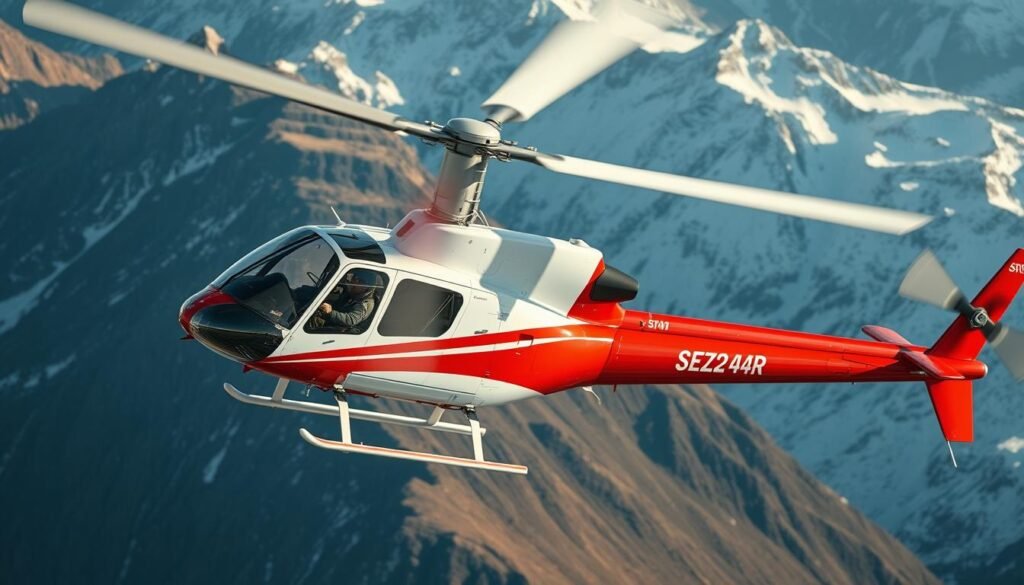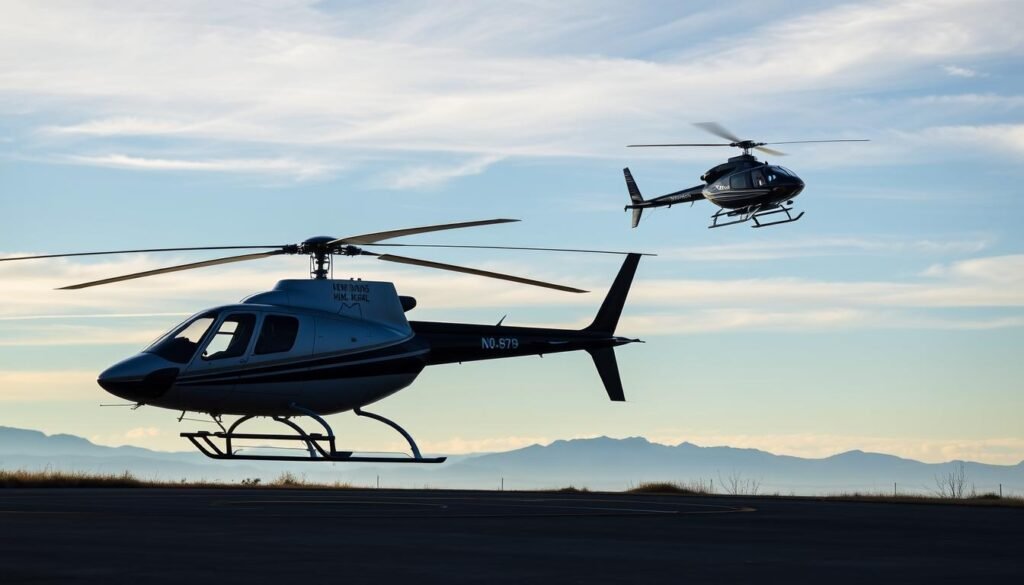They remember a single radio call that changed an afternoon into a race. In this introduction, readers meet three vivid accounts that show how aircrews and ground teams shaped outcomes across the United States.
From the Vietnam-era MISTY 11 combat rescue to Appalachian technical evacuations at Old Rag, and a Grand Teton short-haul AED save led by Dr. Will Smith, each case highlights disciplined operations under pressure.
These events trace how checklists, hoist and short-haul skills, and tight air-ground communications became force multipliers in austere terrain. The article extracts operational lessons to help crews, planners, and medical teams make better decisions when seconds matter.
Readers can explore archived mission summaries and field logs for deeper detail, including Appalachian vignettes and command evolution, at a comprehensive case collection here: Appalachian case logs. For context on aviation capability and rescue evolution, see this overview: how helicopters revolutionized rescue operations.
Key Takeaways
- Real incidents show how trained crews and systems reduce risk in high-stress rescues.
- Historical cases like MISTY 11 inform modern command and medical choices.
- Air-ground coordination, checklists, and hoist skills save lives in rugged terrain.
- Study of Appalachian and park incidents reveals scalable lessons for operations.
- Every statistic represents people, decisions, and opportunities to improve readiness.
Why Helicopters Matter In Search And Rescue Operations
Vertical lift and precision hover turned distant, inaccessible sites into reachable zones during high‑stakes rescues.
Airborne platforms delivered hoist and short‑haul access in the Grand Teton cardiac arrest case and enabled combat extractions with HH‑3E and HH‑53C aircraft in Laos. That capability changed timelines when ground access would have missed the window for definitive care.
Precision insertion and hover permit crews to bridge the last hundred feet between flight and steep faces, dense canopy, or narrow canyon floors. Robust air‑to‑ground protocols keep crews and ground teams synchronized while they search an area more efficiently.
- Safety depends on power margins, rotor clearance, and crew resource management.
- Community integration — volunteers and even high school auxiliaries — improves logistics and scene control.
- Limits include weather, icing, and winds; well‑rehearsed ground alternatives protect continuity of care.
For a technical overview of tactics and flight standards, consult this helicopters in search and rescue overview.
Scope, Sources, And Case Study Methodology
Researchers established criteria to select verified incidents and then mapped timelines across mission phases.
The review relied on Appalachian logs (1981–1988), the official MISTY 11 account, and the Grand Teton narrative. Each source provided aircraft data, crew names, call signs, and timelines to ground conclusions about operations.
Inclusion required verifiable details that allowed phase mapping: dispatch, en route, approach, extraction, egress, and turnover. This structure helped compare how decisions affected response and patient care over time.
Analysts triangulated a modest number of sources to balance official reports with on‑scene notes. The team focused on emergency care workflows and how aircraft availability shaped choices between extrication and on‑scene treatment.
“Methodology favored verifiable records to reduce bias and reveal usable lessons.”
Limitations included missing radio transcripts and observer bias, mitigated by cross‑reference with equipment specs and doctrine. Lessons were then sorted into aviation, medical, incident command, and communications to aid practitioners and inform first year baselines.
U.S. Landscape Of SAR: Agencies, Air Assets, And Mission Profiles
A complex patchwork of agencies and volunteers sustains search and rescue across the united states.
Roles Of Park Service, County SAR Teams, And Military Support
The Park Service often leads technical rescues inside national parks and coordinates with county sheriffs and volunteer sar teams when incidents cross borders.
Civil Air Patrol joint commands and military aviators provide additional reach, especially for long-range scans or when specialized crews are required.
- Mission profiles include hasty and grid searches, high-angle evacuations, medical short-haul, and missing aircraft sweeps that cover many miles.
- Helicopters face weather minima, power margins at altitude, and night limits; maintenance windows and crew rest define sortie availability.
- Incident control often shifts to a unified command when multiple agencies converge to ensure legal authority and safety oversight.
- Members train to common standards — shared radio plans, mapping, and tasking formats — to improve interoperability on scene.
MISTY 11, 1969: Combat Rescue Over Laos And The 500th Save
October 24, 1969, saw a frantic rescue over Laos that tested aircrew skill, command discipline, and raw courage.

Mission Setup: FastFAC Down, Initial Call, And Air-Ground Control
The operation began with a MAYDAY and tight air‑ground control from an OV‑10 FAC. A package of A‑1 SANDYs and HH‑3Es built toward the area as weather and terrain narrowed options.
Low Bird, High Bird: HH-3E Jolly Green Giant Tactics
Low birds made ingress runs while high birds read the evolving scene. When JOLLY 28’s hoist was shot off, a PJ and a survivor fell about ten feet and crews improvised on the fly.
Flak Trap, Weather, And Decision Points Under Fire
Concentrated ground fire created a flak trap that forced split‑second choices. LT Butchka later climbed a roughly 130‑foot face, using “a little bit of airspeed” to clear the ridge under continued fire.
Multi-Ship Response: Skyraiders, Super Jolly, And Refuel Support
Multiple ships adapted: JOLLY 76 withdrew damaged, SANDYs laid CS smoke, and a C‑130 provided refuel support so crews could remain on scene into the fading light.
Outcomes, Awards, And The Human Meaning Of A “Save”
The sequence produced the 500th save for the 37th ARRS. Awards followed for duty and valor, including an Air Force Cross and Silver Stars. This case shows how air, ground, and flight support combine under attack to change outcomes.
“a little bit of airspeed”
- Key Tactical Lessons: anticipate enemy fire patterns; respect power margins measured in feet; coordinate suppression before hoist attempts.
Air-Ground Coordination And Incident Command In Civilian SAR
Civilian search teams and air units learned early that a clear chain of command shortens response time and limits risk.
Joint Command With CAP And Early ICS Lessons
Appalachian logs cite one of the first joint command setups between the ASRC and Civil Air Patrol. That model shaped later Incident Command System adoption across counties.
Shared control standardized operations and clarified authority when multiple agencies arrived. It also created a single incident action plan to bind volunteers, paid staff, and air units into one safe effort.
From Dispatch To Scene: Communications, Maps, And Control
Dispatch begins with a 911 call and moves through sectoring, grid assignments, and ground tasking. Clear maps and radio nets cut duplicate effort and speed arrival at high‑probability areas.
Relay points and simple reporting formats solved line-of-sight problems in steep terrain. Rapid response was balanced by quick check‑ins and safety briefs to preserve span of control.
- Ground containment and trackline coverage often guided air insertion decisions.
- Early school-of-hard-knocks lessons pushed agencies toward stricter location reporting and common plans.
“Joint command reduced confusion and saved time when seconds mattered.”
Appalachian SAR Vignettes: Hours, Miles, And Decisions In The Field
Field logs from Shenandoah and nearby ranges record how teams managed miles, manpower, and time to find missing people.

Old Rag Cliff Fall: Technical Evacuation And 150 Members On Scene
Old Rag in Shenandoah National Park involved roughly 150 members in a complex technical evacuation. Teams worked ropes, belays, and litter teams across exposed rock for an 11-hour operation.
Blue Ridge Mountain Rescue Group received a National Park Service commendation for coordinated effort that kept safety margins while moving a patient down steep terrain.
Alzheimer’s Searches: Air Observations, Containment, And Patterns
Early searches used high school students to form line grids. That practice taught hard lessons about supervision, navigation, and staying in formation under brushy cover.
Ground containment on trails and along a key road network narrowed the search area and raised detection probability. Trackline assignments covered miles and many field hours to convert small clues into direction‑of‑travel hypotheses.
An Alzheimer’s subject located by helicopter showed that, in certain canopy and weather conditions, air observation in summer could outperform expectations. Cases varied by age and medical profile, which guided urgency, task choice, and transport once located.
- Old Rag demonstrated large-scale coordination with members operating across a national park.
- Discipline on the ground remained decisive even when air support was available.
Risk, Weather, And Terrain: How Conditions Shape Flight Decisions
Pilots and commanders often treat weather and terrain as the primary constraints that redefine every operational choice.
In practice, crews evaluate ceilings, winds, temperature, and density altitude to judge whether a helicopter can reach an area and hold a safe hover margin.
MISTY 11 flew with broken cumulus and bases near 2,000–3,000 feet AGL, while the Grand Teton short‑haul happened in clear conditions. Appalachian efforts often met fog, storms, or night, forcing relays and contingency plans.
- Ceilings and visibility limit approach options and dictate alternate routes.
- Power checks and density altitude measure whether crews keep a safe margin in feet when hovering near a ridge top.
- Terrain funnels wind and creates rotor wash hazards that change approach headings and slope angles.
Time pressure often compresses windows, forcing synchronization of tasks before conditions degrade. Good practice preserves safety: defined go/no‑go criteria, clear escape routes, and the willingness to revert to ground teams when prudent.
“A single decision can trade exposure for terrain clearance measured in feet.”
Rescue In Grand Teton National Park: Cardiac Arrest And Short-Haul
A clear March morning in Grand Teton set the stage for a tightly timed response that began with a frantic cellphone call.
Emergency Call, Location Tracking, And Response Time
Dispatch received a usable GPS ping from the patient’s spouse. That precise location let responders plot a direct route and cut time to the scene.
Dr. Will Smith and Teton County search teams launched immediately. Two friends had started CPR before aircraft arrival, maintaining perfusion until crew contact.
On-Board AED, Minimal Gear, And The “24-Hour Pack”
The team chose a rescue helicopter insertion to enable a short-haul. Carrying an AED and a compact airway kit fit mission constraints and the 24-hour pack each responder carried.
The compact medical loadout meant life‑saving equipment reached the patient without delaying flight or overloading the team.
Outcome: Return Of Pulse, Cath Lab, And National Park Service Recognition
Weather cooperated and the crew held a precise hover a safe number of feet above uneven ground while coordinating rotor wash and packaging.
The AED delivered a shock and restored a pulse. Rapid transfer to an ambulance and then the cath lab followed; physicians stented a blocked LAD after a renewed arrest. The person survived and recovered.
“Early CPR, quick defibrillation, and seamless handoffs saved a life.”
| Element | Action | Result |
|---|---|---|
| Call & Location | Spouse cellphone GPS used | Reduced time to scene |
| On-Board Care | AED + airway kit + 24-hour pack | Pulse restored on site |
| Transport | Short-haul to ambulance, rapid flight to hospital | LAD stent; survival |
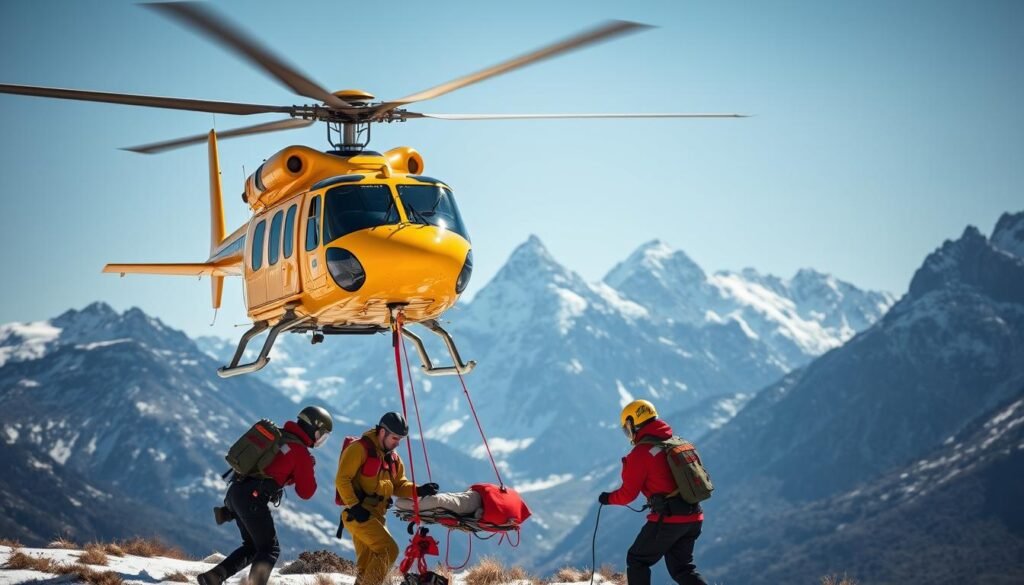
Recognition by the National Park Service highlighted how disciplined preparation, favorable weather, and coordinated teams produced a successful, person-centered rescue in a rugged area.
Training, Readiness, And The Role Of SAR Teams
Readiness rests on repeated practice: gear checks, scenario hours, and clear leadership make teams reliable for any response.
Teton County logged 5,300+ hours in 2023. That figure reflects classroom work, field drills, and multi-agency exercises. Dr. Will Smith serves as Co‑Medical Director and helps shape medical training standards.
Training spans a school pipeline through advanced certifications. Courses include ICS, hoist/short‑haul, avalanche awareness, Stop the Bleed, and wilderness medicine. Many volunteers balance duty with civilian careers while maintaining credential currency.
Readiness models focus on equipment checks, crew rest, and alert rosters. Teams practice landing zone safety, rotor wash management, and brevity codes so a helicopter insertion or ground handoff is smooth and safe.
- First Year Support: mentors, paired shifts, and after‑action reviews accelerate competence.
- Leadership Development: duty rotations prepare members to assume team lead, operations, or medical roles.
- Measured Drills: hours of scenarios build muscle memory for emergency handoffs.
Decision-Making Under Pressure: From Flak Traps To Avalanche Paths
Leaders at a tense scene must weigh speed against exposure when hazards change by the minute.
Commanders set acceptable risk by balancing urgency with safety metrics. They evaluate likely secondary hazards, such as a repeat attack or a sudden fire, before committing crews.
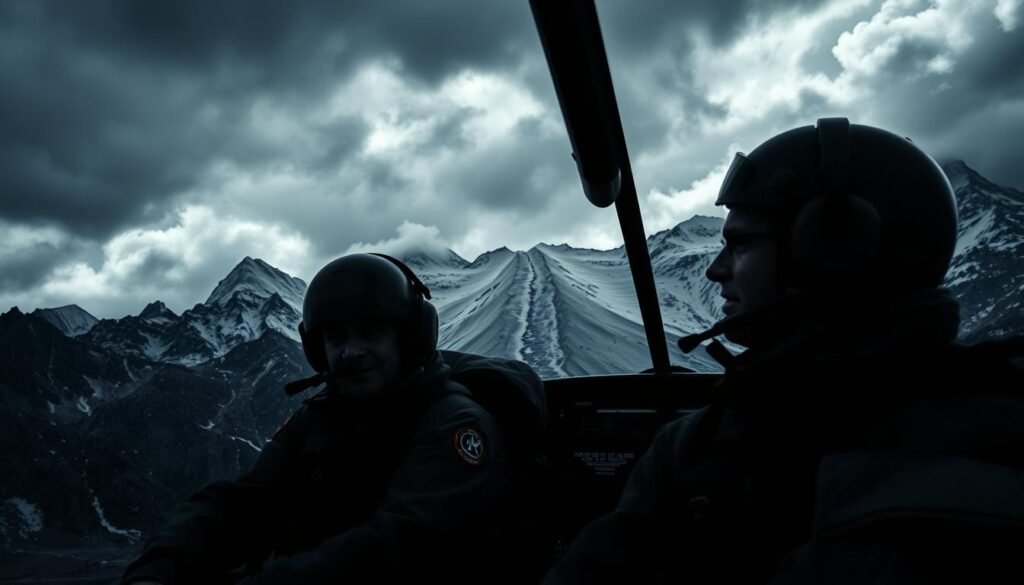
Scene Safety, Acceptable Risk, And Go/No-Go Choices
Teams use clear go/no-go triggers. A downwind approach in MISTY 11, for example, reduced exposure to predictable firing arcs while enabling a ridge-top egress later.
That counterintuitive way—choosing an indirect path to lower risk—appears in both combat and park incidents. Checklists and contingency triggers keep choices consistent under stress.
Medical Priorities: Extrication Versus On-Scene Care
Medical leaders must decide whether to treat on site or move a patient quickly. Stop the Bleed shifted priorities toward rapid hemorrhage control and fast movement when transport time matters.
In Grand Teton events, triage and rapid extrication trumped extended on-scene interventions when lightning or debris threatened ground stability.
“Clarity, not a bit of guesswork, governs high-stakes choices.”
| Element | Decision Considered | Action Taken | Outcome |
|---|---|---|---|
| Exposure | Predictable fire arc | Downwind approach | Reduced hits, safer egress |
| Medical | Ongoing hemorrhage | Rapid extrication + hemorrhage control | Higher survival odds |
| Environmental | Unstable slope | Delay or relocate landing | Preserved crew safety |
- Leaders weigh a little extra time against mission benefit.
- Ground coordination manages rotor wash, debris, and patient safety during hover transitions.
- After-action debriefs codify lessons so future teams shave critical minutes off response cycles.
Rescue success under pressure comes from rehearsed options, disciplined roles, and strict adherence to go/no-go standards.
Helicopters At The Scene: Hoists, Short-Haul, And Extraction Methods
Hoist or short-haul selection depended on rigging, clearance, and the crew’s ability to adapt under stress.
Hoist operations used canopy penetrators or litter rigs and demanded careful cable management at the scene. Short-haul placed a rescuer near a patient and relied on fast packaging to bring them on board quickly.
Key technical notes:
- Canopy penetrator deployment required tight aircrew‑gunner coordination to avoid spin or snagging.
- Hover profiles included routine power checks and defined escape routes measured in feet.
- Fire exposure often forced downwind or low‑probability approaches to reduce predictability.
When a hoist mount was struck, teams resequenced pickups, shifted to alternate aircraft, and preserved the overall plan. Brevity on radios and clear hand signals kept loading efficient despite rotor wash and noise.
| Technique | Primary Concern | On-Scene Adjustment |
|---|---|---|
| Hoist With Penetrator | Cable snag, shock load | Aircrew‑gunner timing; alternate pickup |
| Short‑Haul | Packaging, rotor clearance | Fast pack, strict hover margin (feet) |
| Multi‑Aircraft | Deconfliction | Stacks, time blocks, sequenced pickups |
“A bit of planning and crisp signals turned a risky approach into a controlled extraction.”
From Battlefield To Backcountry: Tactical Lessons In Civilian Rescue
Combat medicine techniques reshaped civilian practice after leaders proved they worked under pressure. Dr. Smith’s TCCC-informed approach—tourniquets first, extrication priority, Stop the Bleed—moved into everyday backcountry care and changed how teams respond to sudden events.
Those changes matter during complex incidents such as lightning strike mass-casualty scenes and a multi-balloon crash he managed. Field teams applied simple hemorrhage control and rapid triage to cover miles and stabilize victims until transport arrived.
Doctrinal shifts focused on empowering bystanders, prioritizing hemorrhage control, and using clear roles. This way sped interventions on remote trails and reduced preventable deaths.
The section also links air coordination practices—deconfliction, stack management, and fuel cycle planning—to medical tempo during high-risk fire or weather conditions. Medical directors and flight medics served as trainers and force multipliers day after day, raising standards across the united states.
| Doctrine Element | Action | Impact |
|---|---|---|
| Hemorrhage Control | Tourniquets first; Stop the Bleed | Faster stabilization; lower mortality |
| Rapid Extrication | Prioritize movement over prolonged care | Shorter scene time across miles |
| Mass-Casualty Scaling | Simple triage + role clarity | Organized evacuations; efficient use of air assets |
| Training & Leadership | Medical directors/flight medics as instructors | Consistent performance across agencies |
Bottom line: battlefield lessons adapted to rugged settings produce reliable outcomes when discipline, clear duty, and coordinated air support align with medical priorities.
Communications, Control, And The “Chain Of Survival” In The Air
Clear, concise comms often determine whether a response becomes coordinated rescue or chaotic delay. A prompt 911 call with a GPS ping set the Teton response in motion and showed how an accurate location shortens response time.
Dispatch, FAC/Overhead, And On-Scene Command Integration
On complex scenes, overhead aircraft or air attack—like FAC NAIL 07 and COVEY 297 in MISTY 11—shape stacks, suppression runs, and refuel sequencing with KING 03 on call.
Commanders used common operating pictures: map grids, time marks, and standard check-ins to keep every element synchronized. Appalachian ICS logs recorded radio relay chains that bridged steep ground with portable repeaters and high‑point relays.
Number reporting—saves, patients, and aircraft on station—helped predict fuel needs and alternate plans. Flight cycles and refuel windows matched medical turnover to sustain tempo without overextending crews.
“Clarity and brevity in radio discipline correlate with safer, faster extractions.”
| Element | Measure | Result |
|---|---|---|
| Call | GPS + time stamp | Faster tasking |
| Control | FAC overhead | Coordinated stacks |
| Emergency | Lost comms plan | Rally points / safe egress |
- Ground relays keep nets alive when line-of-sight fails.
- Prebriefed signals cover sudden fire or downed aircraft contingencies.
- Brevity on the radio preserves situational awareness and reduces errors.
SAR Helicopter Missions: Real Stories From The Field
A review of flagship rescue cases shows how unified command and practiced tactics cut time on scene across varied United States terrain.
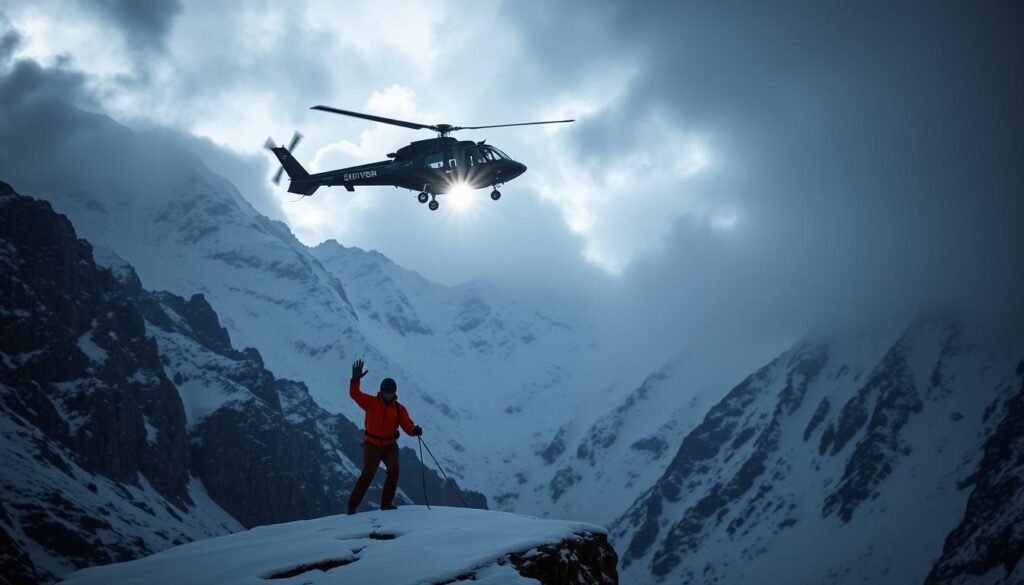
Summaries include MISTY 11’s 500th milestone, an Old Rag 11‑hour technical evacuation with 150+ members, and a Grand Teton short‑haul AED save recognized by the National Park Service.
Across each area, teams matched early containment with decisive air insertion and disciplined egress to protect crews and patients. That pattern repeated in combat zones, national park cliffs, and rural backcountry.
“Sustained readiness across many day cycles builds institutional memory and improves risk management.”
| Incident | Hours / Members | Outcome |
|---|---|---|
| MISTY 11 | Rapid sortie; low crew hours | 500th verified save |
| Old Rag Evacuation | 11 hours; 150+ members | Technical extraction; commendation |
| Grand Teton Short‑Haul | Minutes to scene; few members | AED shock; hospital transfer |
Key patterns include area familiarity, map mastery, and after‑action learning that shortened future mission cycles. These lessons show how measured preparation and disciplined teams deliver consistent rescue results.
Impact On Families, Communities, And SAR Members
Families watched anxiously as teams worked methodically through a long day to find and care for loved ones.
Family members felt deep relief when crews reached a patient and handed them over to hospital staff. In Grand Teton, the patient and spouse later shared gratitude and the National Park Service noted the team’s role.
Age influenced urgency. Older search subjects, such as Alzheimer’s cases, changed tasking and public messaging. Younger climbers raised different medical and technical needs.
National park rangers, guides, and volunteers often bolstered ground efforts. Neighbors donated time and experience, and many logged long hours around jobs and families.
Peer support and debriefs mattered. Teams tracked emotional load and offered counseling after intense days. Meeting survivors in person closed a loop and validated tough choices made under pressure.
“Successful rescues ripple outward, restoring trust and motivating continued training.”
| Impact Area | Example | Effect |
|---|---|---|
| Family Members | Grand Teton gratitude | Closure; public recognition |
| Community | Appalachian mobilization | Augmented ground resources |
| Volunteers | Long hours logged | Emotional strain; peer support |
Key Takeaways For Safety, Response, And Future Operations
Clear, concise lessons from past operations show how planning and timing reduce exposure and speed care on scene.
Plan The Way In And Out. Teams should preplan approach and alternate egress over a top or along a road network to manage exposure and compress time to care.
Map Wide Areas. Wide-area incidents demand miles of tracklines and containment points. Mapping and task sequencing reduce overlap and raise coverage efficiency.
Track Numbers And Time. Leaders must monitor number, time, and scene status continuously, linking decision points to fuel state, light, and medical priorities.
- Rescue helicopter approach profiles should vary headings to defeat predictable threat arcs and terrain wind shifts.
- Helicopters and ground units must rehearse handoffs at the scene, packaging in confined spaces measured in feet and using rotor-safe corridors.
- Incorporate outcomes and metrics into after-action reviews to guide staffing, training, and equipment purchases.
“Translate hard-won tactical lessons into doctrine and drills so local parks and large wilderness areas scale improvements.”
| Metric | Measure | Goal |
|---|---|---|
| Number | Patients Saved | Increase verified saves per year |
| Time | Time To Definitive Care | Reduce minutes to hospital (chain of survival) |
| Miles | Tracklines Run | Maximize coverage with minimal overlap |
For medical timing and chain details, consult the evidence on chain of survival timing.
Conclusion
These flagship cases show how a little bit of foresight and disciplined planning changes outcomes.
Across combat, alpine, and Appalachian events, leaders matched medical priorities to aviation realities. A single call triggered a chain that relied on clear comms, trained crews, and ground partners to serve the person at the center.
Weather windows, flight performance, and terrain dictated tactics while doctrine and teamwork turned limits into workable plans. Continued investment in interoperable comms, hoist and short-haul proficiency, AED access, and Stop the Bleed expands capability area-wide. For perspective on pilot careers that sustain this work, see a helpful pilot career stages guide.
In the united states, board‑ready professionalism and multidisciplinary teams honor duty in a quiet way, returning more people home, more often.

